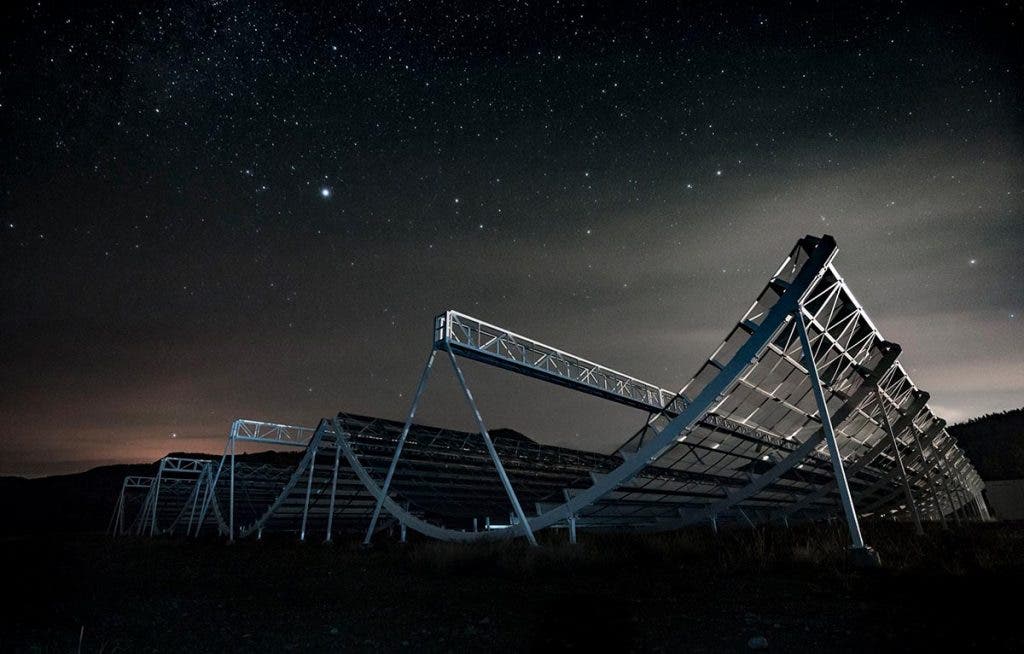Researchers at CHIME, the Canadian Hydrogen Intensity Mapping Experiment, report seeing over 500 fast radio bursts between (FRBs) 2018 and 2019. Such signals are believed to reach Earth from other solar systems.

FRBs are intense bursts of radio waves that pulse, generally, for fractions of a millisecond at a time. We don’t exactly know what creates them, why, or how, but we do know they come from outside of our planet. One possible explanation is that they’re created by neutron stars, some hundreds of millions of light years away, as they spin.
Still, we’ve only discovered FRBs in 2007. The observations from CHIME are helping us better understand what they are, and might even help answer the questions everyone holds in the back of their minds: are we seeing alien activity?
Bursting with radio
“With all these sources, we can really start getting a picture of what FRBs look like as a whole, what astrophysics might be driving these events, and how they can be used to study the universe going forward,” said Kaitlyn Shin, CHIME member and a graduate student in the Massachusetts Institute of Technology’s Department of Physics, in a statement.
CHIME has been a boon for the research of these radio signals — before it was established, there were less than 100 confirmed FRBs observations. But after only one year’s worth of observations, the project has uncovered hundreds more.
Data from the CHIME project seems to indicate that as many as 800 such events pass through the sky every day, most likely from neutron stars scattered around the galaxy. Most of them are evenly distributed in space, single-burst events that don’t seem to repeat.
But at least 61 FBR signals were recorded originating from the same 18 sources.
It’s far too early to speculate on what — if anything — these signals mean. There are natural processes we know of that can create them, and given the distances involved when talking about outer space, only catching glimpses of these signals, milliseconds-long, isn’t very surprising. Even seeing them repeating from the same source isn’t that surprising; unlikely, but not that surprising.
Naturally, however, it raises the possibility of alien activity. Natural events could create these FBRs, but so could a sufficiently-advanced civilization. It’s not something we can say for certain, far from it, but it is within the realm of possibility.
The CHIME telescope is an outlier among radio telescopes. It’s composed of an array of four large antennas which are entirely motionless. It relies on the rotation of the Earth alone to sweep across the sky and receive incoming radio signals. Instead of moving its dishes to capture radio waves from different areas of the sky, CHIME employs an “all digital design” for the role. The signals it receives are fed through a correlator which processes them, allowing the team to know which direction they come from. In essence, this allows CHIME to look in a thousand directions at once. On an average day, CHIME processes around 7 terabits of data per second.
Based on the findings, the team put together the CHIME catalog of fast radio bursts, which was presented Wednesday at the 238th American Astronomical Society Meeting.









